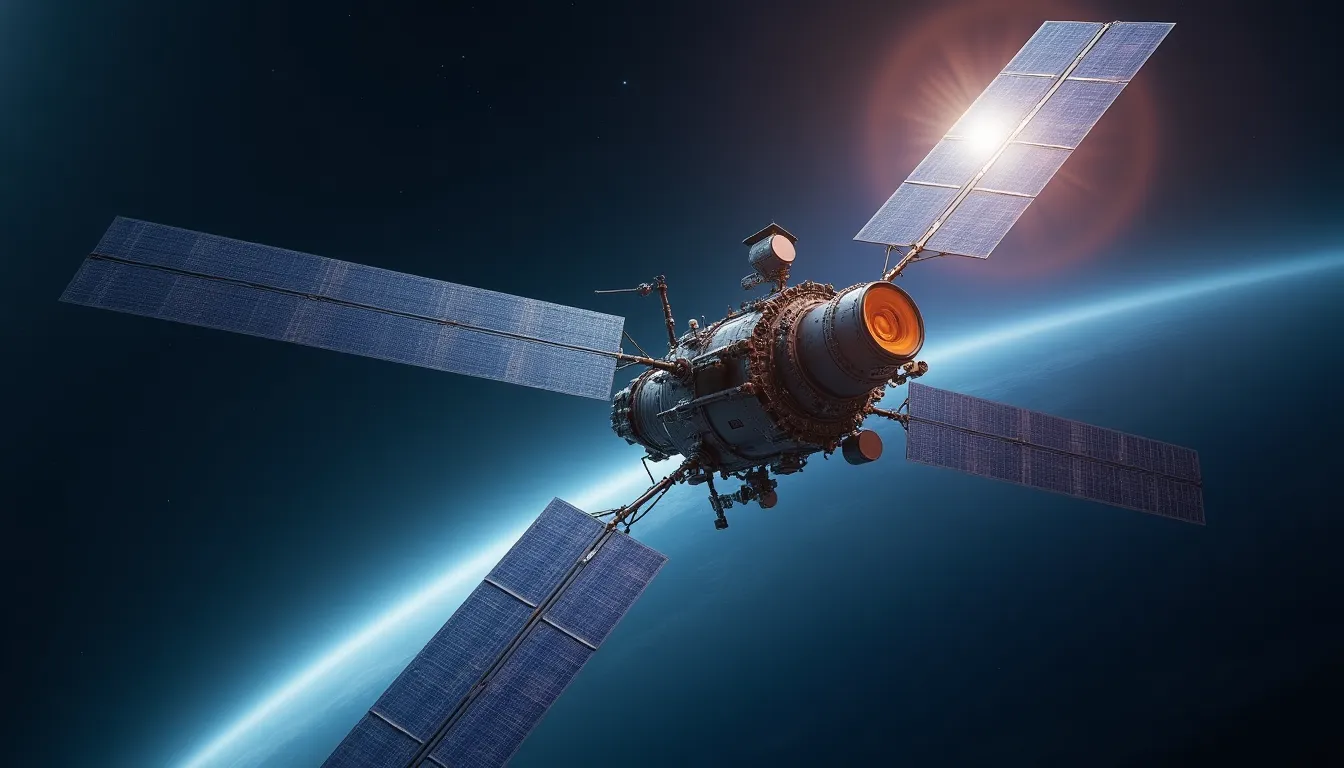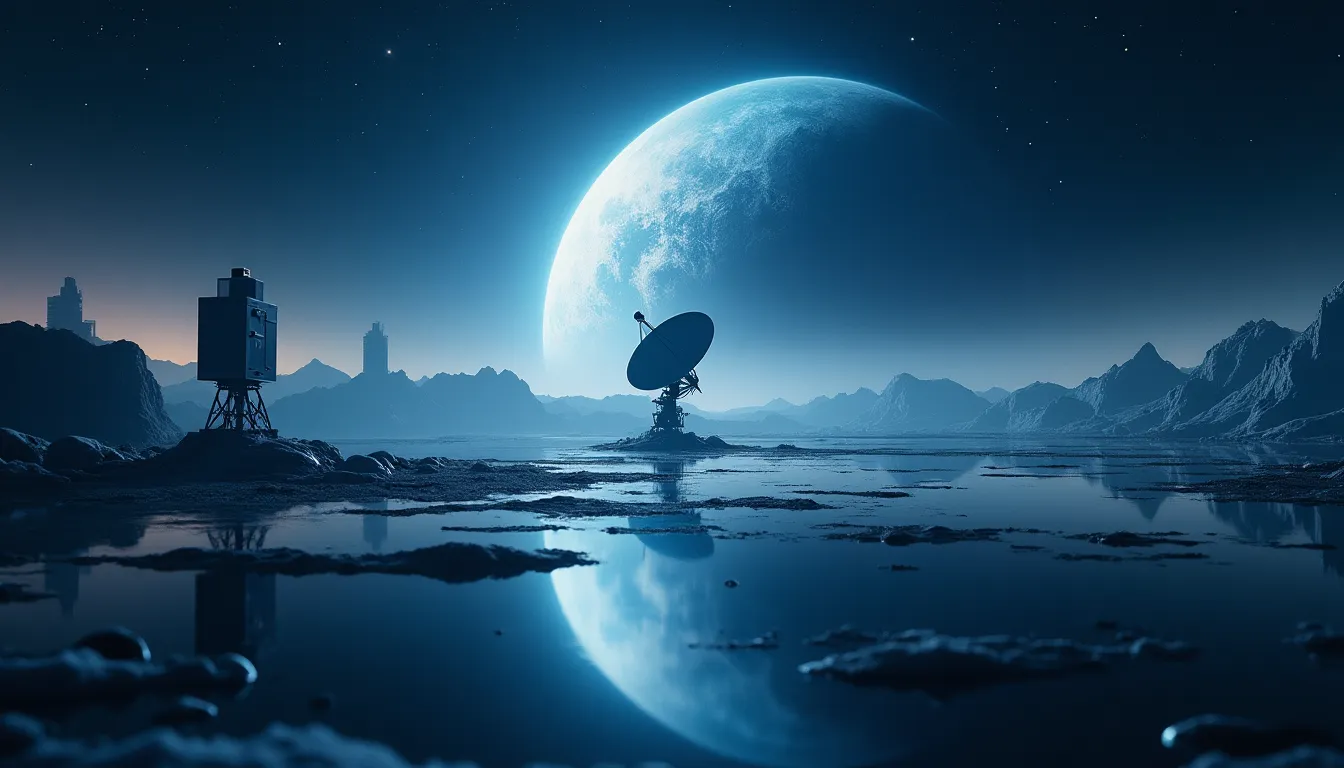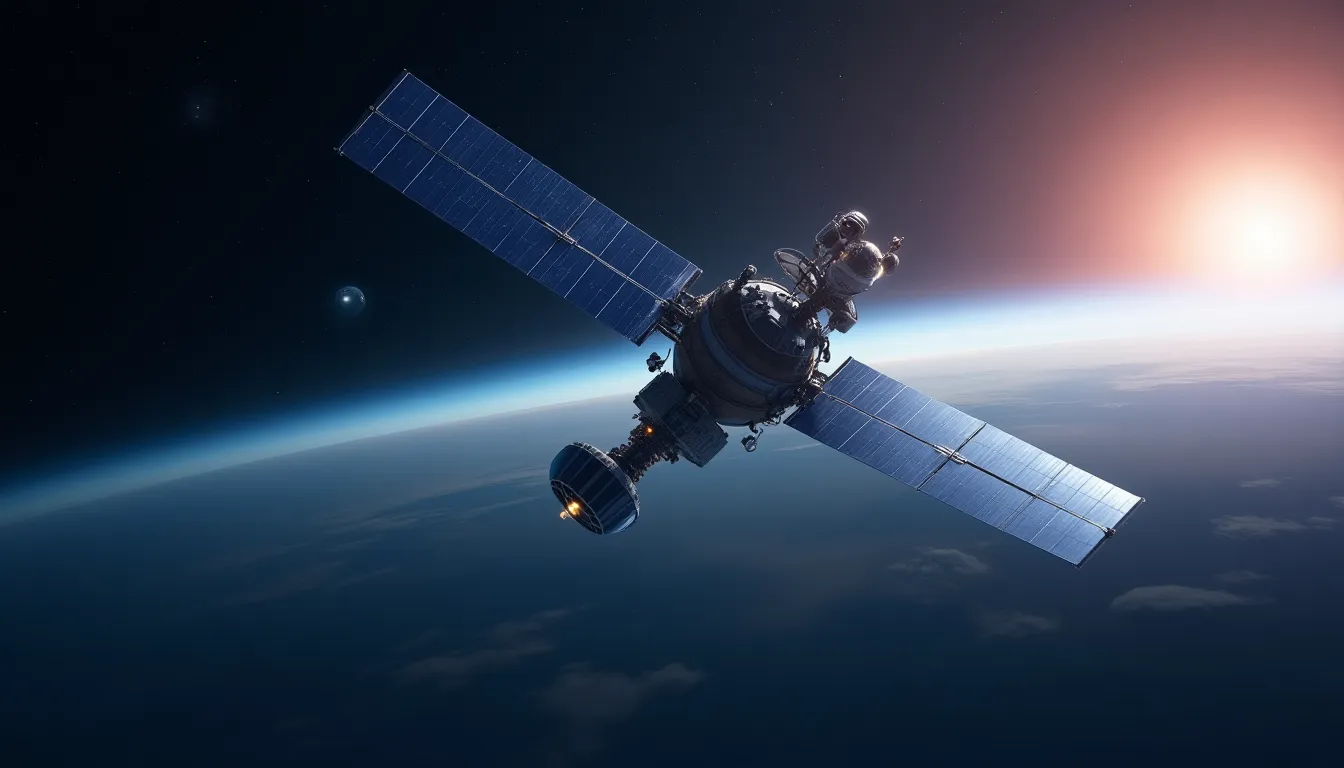The satellite sector is undergoing a profound transformation, driven by advancements in artificial intelligence (AI), cost-effective Earth observation solutions, and innovative communication technologies. As aerospace and defense industries evolve, these developments are set to redefine operational efficiencies, data processing, and global connectivity in space missions.
AI Integration in Satellite Operations
Experts from leading satellite companies, including Eutelsat, Space42, SKY Perfect JSAT, and Spire Global, are emphasizing the transformative role of AI in satellite operations. AI technologies are poised to enhance operational efficiencies significantly. For instance, by automating mission planning and data analysis, AI can provide tailored solutions to meet specific customer needs faster than traditional methods.
The integration of AI is expected to streamline satellite operations, allowing for advanced data processing capabilities that can manage and analyze the vast amounts of information gathered from space more effectively. According to industry leaders, this shift towards AI-driven operations will be a crucial driver in the future satellite ecosystem, enabling businesses to optimize their missions and improve overall service delivery.
Cost-Effective Earth Observation Solutions
A notable player in this evolving landscape is Constellr, which has successfully launched two small satellites and is preparing a third. Weighing between 100-200 kg, these satellites leverage advances in AI and cost-effective launch technologies to deliver performance that rivals larger counterparts at a fraction of the cost—less than 1% of traditional satellite expenses.
The deployment of these small satellites represents a paradigm shift in Earth observation capabilities. By utilizing AI to tailor data products and optimize mission planning, Constellr is setting a precedent for scalable and affordable solutions that can cater to a broader range of clients. This approach not only enhances accessibility but also encourages innovation in how data is utilized across various sectors, from agriculture to urban planning.
Interplanetary Internet Development
In parallel, groundbreaking research is being conducted through the ISS National Lab to develop Delay and Disruption Tolerant Networking (DTN) technology. This innovative approach addresses the challenges of data communication across the solar system, which has traditionally faced significant delays due to planetary movements.
Spatiam Corporation’s commercial DTN platform, currently being tested on the International Space Station (ISS), enables reliable communication by storing data at intermediate nodes until transmission paths become available. This technology is crucial not only for future missions to the Moon and Mars but also for supporting commercial space stations, ensuring consistent and reliable data flows in an ever-expanding frontier.
Expanding Satellite Launches and Constellation Initiatives
SpaceX continues to lead the charge in satellite launches with its Starlink constellation, recently deploying 28 small satellites (Group 11-23) into low Earth orbit from Vandenberg Space Force Base, California. Using the Falcon 9 rocket, which has demonstrated remarkable reusability with 29 flights of the first-stage booster, the mission underscores SpaceX’s commitment to enhancing global broadband coverage and connectivity.
As the demand for high-speed internet access grows, the expansion of satellite constellations like Starlink plays a pivotal role in bridging the digital divide, especially in remote and underserved regions. The integration of advanced technologies, such as precision accelerometers and advanced sensor modules, enhances the performance and reliability of these satellite systems.
European Satellite Constellation Plans
In response to the rapid advancements by private companies like SpaceX, Europe is gearing up to establish its satellite constellation, aimed at rivaling Starlink. This initiative will focus on implementing precision laser communication links designed to overcome atmospheric turbulence, thereby improving data transmission quality.
The European project seeks to position the continent as a significant player in the global satellite broadband landscape, reinforcing its space infrastructure and technological capabilities. As European agencies collaborate on developing this constellation, the importance of effective communication systems, including high-performance PIN quadrant detectors for laser beam positioning, cannot be overstated.
Space Policy Updates and Defense Contracts
Recent updates in space policy reflect the growing importance of satellite technology in national security and defense capabilities. Japan’s successful launch of the HTV-X1 cargo vehicle to the ISS using an H3 rocket is a testament to the nation’s commitment to advancing its space program. Additionally, the U.S. Space Force has awarded contracts aimed at enhancing satellite tracking and debris removal technologies, highlighting ongoing investments in space situational awareness and safety.
These developments not only reinforce the strategic importance of satellite technologies but also signal a broader commitment to ensuring the sustainable use of space in alignment with international norms and regulations.
Conclusion
The satellite sector is at a pivotal moment, characterized by rapid technological advancements and a growing emphasis on efficiency, affordability, and reliability. As AI continues to reshape satellite operations, and as companies explore innovative communication technologies for interplanetary missions, the future of aerospace and defense industries looks promising. The convergence of these technologies will not only enhance our understanding of Earth and space but will also pave the way for new opportunities in global connectivity and exploration. The continued investment in satellite technology is essential for meeting the challenges of tomorrow, ensuring that we are well-equipped to navigate the complexities of space and its vast potential.
References
-
SpaceX moves Starlink Group 11-23 smallsats launch to Friday from … (news.satnews.com) - 10/31/2025 On Thursday, October 30, SpaceX’s Falcon 9 is targeting the launch of 28 Starlink smallsats Group 11-23 to low-Earth orbit from Space Launch …
-
October 2025 - Spaceflight Now (spaceflightnow.com) - 10/31/2025 SpaceX launches 29 Starlink satellites on Falcon 9 rocket from Cape Canaveral · Blue Origin details lunar exploration progress amid Artemis 3 contract shakeup.
-
Advancing Technology for Interplanetary Internet - ISS National Lab (issnationallab.org) - 10/30/2025 ISS National Lab-sponsored research paves the way for future space communications—learn more in the latest issue of Upward magazine. October 30, 2025.
-
What’s Happening in Space Policy October 26-November 1, 2025 (spacepolicyonline.com) - 10/27/2025 Launch of JAXA’s HTV-X1 cargo vehicle to the ISS on an H3 rocket, October 25, 2025 EDT (October 26 in Japan). Screenshot. Another Russian …
-
Space Brief 26 Oct 2025 - KeepTrack (keeptrack.space) - 10/26/2025 Today’s brief covers a new Space Force contract for advanced tracking systems, innovative debris removal strategies, pivotal new satellite …
-
Space in the 21st Century - Space Daily (www.spacedaily.com) - 10/24/2025 Europe plans satellite powerhouse to rival Musk’s Starlink Paris (AFP) Oct 23, 2025 ; Precision laser links overcome turbulence for better …
-
Space in focus: The rise of Earth Observation – and other news to … (www.weforum.org) - 10/14/2025 Releasing on October 15 2025. The first 10 Emerging Technology Solutions for Planetary Health report will spotlight technology solutions that …
-
Satellite’s AI Future: The Big Debate | October/November 2025 (interactive.satellitetoday.com) - 10/7/2025 Experts from Eutelsat, Space42, Sky Perfect JSAT, and Spire Global weigh in on how AI will impact satellite operations and services.
-
What’s Up: October 2025 Skywatching Tips from NASA (science.nasa.gov) - 9/30/2025 What’s Up for October? A Supermoon takes over, the Draconid meteor shower peeks through, and the Orionid meteors sparkle across the night sky.



